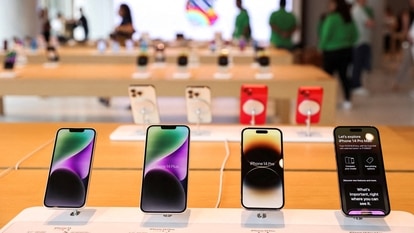The evolution of a couch potato: How TV and viewers are changing
The future of TV will be based on experiences to engage, entertain, and activate viewers stemming from creativity, imagination, and innovations in technology.
Like most mediums of entertainment, television has come a long way - from analog broadcasts to digital cable networks to Netflix to media devices. The future of TV will be based on experiences to engage, entertain, and activate viewers stemming from creativity, imagination, and innovations in technology. While traditionally, TV has been a medium of consumption, the Web experience via PC, mobile, or stand-alone devices, has also brought in real-time engagement. While many call it the death of traditional TV industry, it might just be the factor which brings growth.
Most industry watchers forget that TV viewing isn't work. It is, several times, a passive activity. While we need better paradigms for content discoverability and navigation than the current never-ending menus provided by set-top boxes, watching TV should be an intuitive, laidback experience without the complexities of navigating Web or tapping fervently on a smartphone.
Let's have a look at where do the current trends point to for television and entertainment in the living rooms.
Remote Controls are Dead
Okay, excuse the troll-bait heading. Although, in all probability, mobile devices are poised to become the navigation tool of choice while watching TV or controlling your DV₹etc. while away from home. The mobile phone applications also add a layer of social watching to your experience. Progressively, the remote apps would also enable users input text for search and allow better discoverability and selection of options, something which is tough to implement with the traditional remote controls.
And then there is gesture-based control. Using Kinect for Xbox 360, you could control TV playback through hand gestures. With innovations like Siri, controlling TV playback and switching channels could be a breeze with voice control. These advances would also lead to wider adoption of web-to-TV services and more natural interfacing.
Let's Bring Social In
If there is a technology trend prediction, the way forward is to bring the social fabric into the mainstream. As the Web user becomes increasingly social and digital marketers tell the world how social media is the next big thing, this fabric would inspire betterprogramming and viewer engagement.
Getting social brings people together plugged into real-time conversations around the program - an event which is the epicenter of the entire engagement. Some news shows now run social media tickers during programs and live statistics based on analytics of those conversations. Several shows also bring in community participation in creating content to carry forward the stories and parallel Web presence to supply supporting content like behind-the-scenes footage, uncensored clips, interviews, et al. These build on the interest and anticipation for upcoming episodes transforming the viewing experience to a holistic indulgence.
There's an App for It
Interactive, web-like applications enhance the TV viewing experience by supplementing programming content with additional activities and deliver Internet content and services. Time Warner Cable announced applications for Sony Bravia TVs, as well as TVs, Blu-ray players and tablet devices from Samsung last year. Similarly, Comcast has its own Samsung TV app as well as an iPad app that allows subscribers to watch live TV programming.
According to a GigaOm Pro research, the growth in adoption of TV app platforms will result in revenues from apps on TVs going from just $10 million in 2010 to $1.9 billion by 2015. By that time, 6 in 10 TVs shipped worldwide will have a network connection and 70 percent of those will come with an embedded app platform and app store.
While most cable, satellite, and IPTV providers have built or are building apps for mobile platforms that enable viewers to search, browse, and navigate content, applications for Internet-enabled TVs and other media devices will allow better interactivity and engagement with TV programming. Apps enable experience that isn't possible with traditional set-top boxes.
Viewer is the King
And finally, viewer decides what he wants to watch throwing the program guide away. You can watch a show online, on-demand, or pre-recorded on DVR. The idea of audience lead-in is fading away and apart from live events, the focus on real-time would shift. This also allows discovery of new content based on interest through your social networks or services like Miso and GetGlue. The viewer's choice is increasingly coming from 'recommended' to 'on-air'.
Also, since TV makers are increasingly adding new content options through diverse apps for gaming, streaming music services like Pandora, video services like Netflix and Hulu, this allows the viewers to broaden the available content sources than the limited options available via cable operators.
Catch all the Latest Tech News, Mobile News, Laptop News, Gaming news, Wearables News , How To News, also keep up with us on Whatsapp channel,Twitter, Facebook, Google News, and Instagram. For our latest videos, subscribe to our YouTube channel.


























